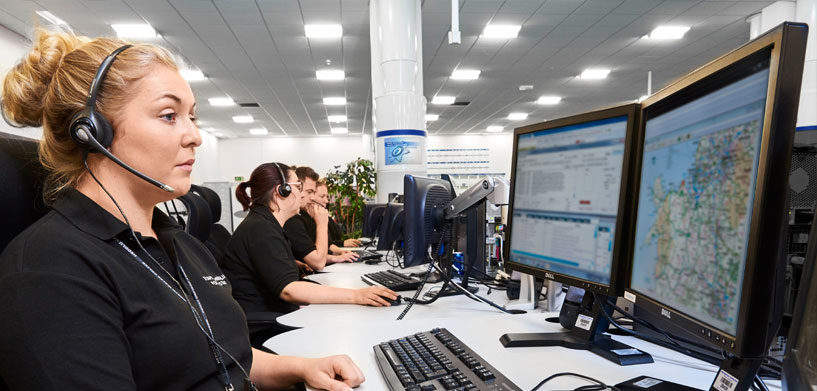As Next Generation 9-1-1 is gradually implemented in North America, a parallel push is happening to upgrade 112 systems in Canada, Europe, Asia, Oceania, and South America, as well as 999 in the U.K.
What’s the big motivating factor? NextGen communications will make it easier for citizens to report an emergency or request help. It will phase out time-served and restrictive systems in favor of feature-rich, modern solutions.
Advanced technologies are shifting focus from emergency calls to emergency communications. The NextGen platform enables callers to text and chat with comms centers, as well as send photos and videos. And because NextGen technology is built on an IP-based system, callers can be found easily, even in remote areas.
The move to NG112/999 starts with collaboration
Successful implementation of NG112/999 hinges on collaboration across public safety organizations, telecommunications providers, and governments.
The European Emergency Number Association (EENA) has been a resource, advocate, and partner to European agencies seeking to upgrade their systems. An EENA Knowledge Hub even provides a step-by-step guide for stakeholders.
Another group, the British Association of Public Safety Communications Officials (British APCO) has focused its efforts on upgrading the U.K.’s emergency communications number to NG999. The group released a study detailing the importance of the project, which will be made possible by substantial technology upgrades by BT Group.
Building the framework for NG112/999
The architecture of a NextGen comms center is comprised of a handful of primary integrated systems and 30 or more subsystems that include a complex series of networks, routers, bridges, interfaces, and servers. At the core of the NG112/999 architecture are Emergency Services IP Networks, or ESInets, which are interconnected, private IP networks.
ESInets also serve as the catalyst for a comms center’s primary systems – geographical information system (GIS), video surveillance system, LTE communication infrastructure, computer-aided dispatch (CAD) system, and integrated communication platform (ICP). The ICP makes it possible to receive communications (i.e., calls, texts, social media posts, photos, videos, alarm sensors) and dispatch those communications to comms centers.
Here’s a look at other vital pieces of the NG112/999 architecture:
- Border Control Function (BCF): The point of entry to the ESInet infrastructure. As the first element in an emergency call, it adds a call identifier and incident tracking identifier to the call.
- Emergency Services Routing Proxy (ESRP): The function moves an emergency call through the chain until it reaches the appropriate comms center.
- Emergency Call Routing Function (ECRF): Used within an ESInet to route calls to the appropriate comms center. May be used by the comms center to route calls to responders.
- Location Information Service (LIS): A fundamental entity that interfaces with the Advanced Mobile Location (AML) feature embedded in iOS and Android operating systems.
- Call Transfer Bridge: Used to transfer calls within a comms center or conduct conferences.
Inside the comms center
As is often the case, technology is central to the NextGen concept, but the concept is only fully realized when the right tools are in place. Perhaps the most critical link in the NextGen chain is the comms center, where the communications are received and managed by call-takers and dispatchers.
Industry-leading tools are also transforming comms center operations at all levels. Modern CAD systems provide a wealth of relevant data to call-takers and dispatchers. They not only enable new communications channels with the public (i.e., texting, pictures, and videos), but they also provide an intuitive user experience that helps manage the deluge of data.
Dispatch systems can also receive alerts from third-party sensors that can detect everything from extreme weather conditions like flooding to environmental anomalies like radiation. Sensors, combined with photos and video, provide greater insight into the emergency, which boosts the readiness of responders.
Conclusion
Implementing NG112/999 requires not only a complex chain of technological systems and tools, but also collaborations between governments, telecommunications providers, and public safety organizations.
The simple truth is NextGen 112/999 will benefit citizens, whether they call, text, or chat via social media apps. The benefits are twofold because it will ensure better, more efficient service to the public, while providing citizens diverse channels to communicate during an emergency. The end result is more than just a number – it’s a safer, smarter global community.
Learn more
To learn more about how an industry-leading, next-generation solution can transform your comms center, check out HxGN OnCall Dispatch.
Enjoy this post? Subscribe to our blog and have industry insights delivered right to your inbox each week. Subscribe now.
















